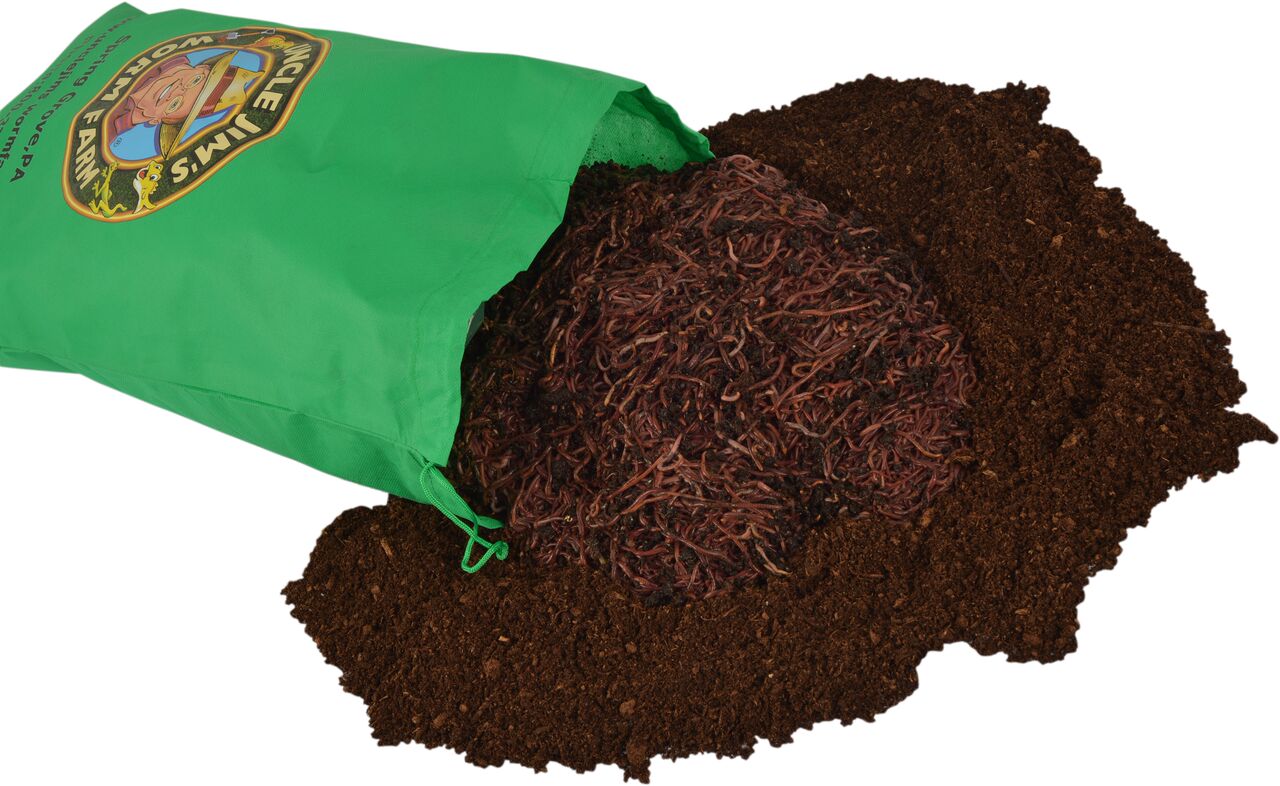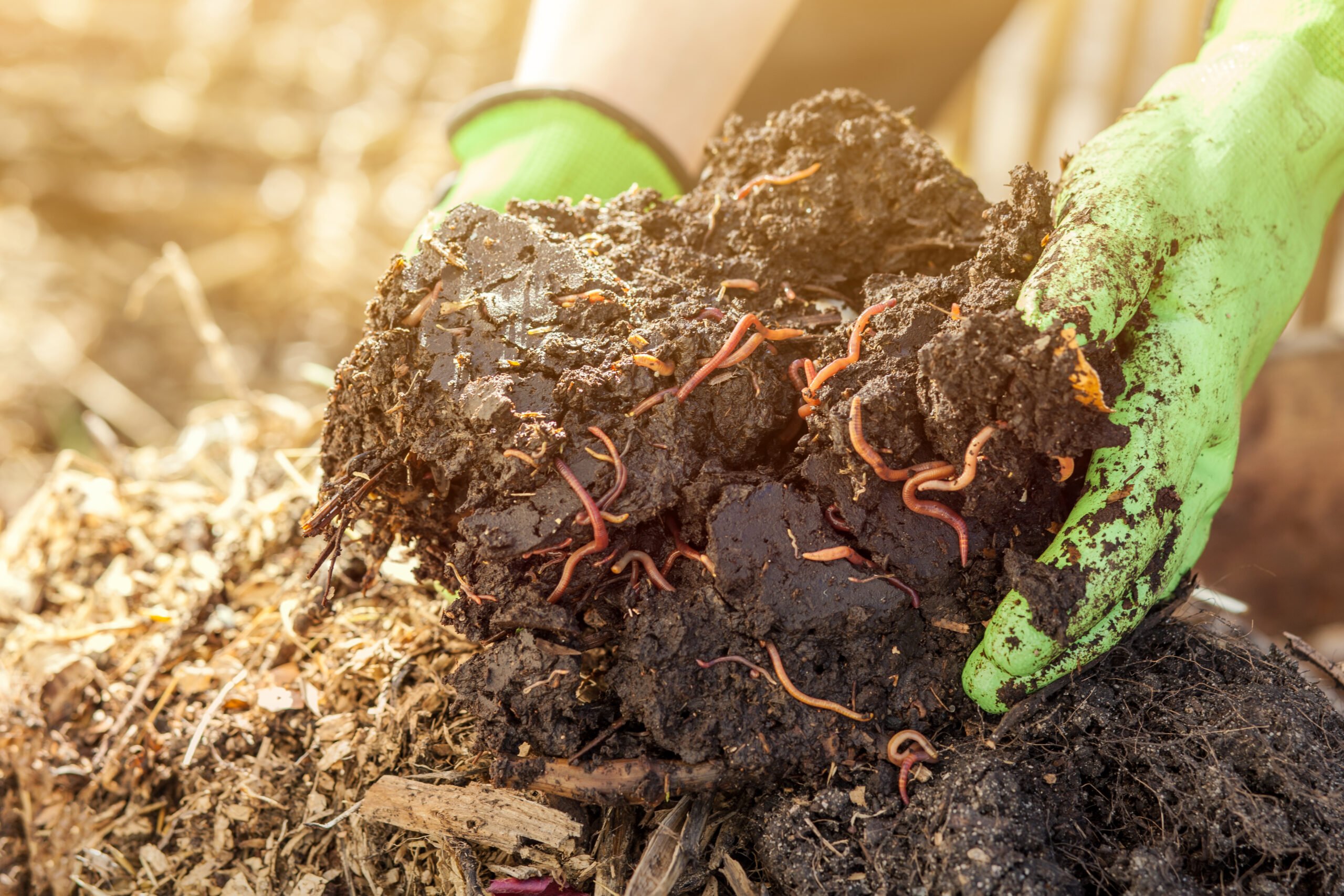Today, we’re diving deep into the world of Red Wiggler eggs and Red Wiggler cocoons. Ever wondered what those little worm eggs look like, where they’re laid, or how many baby worms pop out of a single egg? If you have, stick around because we’re about to unravel all the mysteries of the remarkable reproductive cycle of the worm world.
As you might already know, my family and I have been running a vermicomposting farm for over 40 years. So, we’ve got the inside scoop on all things worm-related, especially the fascinating Red Wigglers – the worm species that steals the composting spotlight.
Reproductive Cycle 101: At What Age Is a Red Wiggler Able to Reproduce?
Red Wigglers typically start their reproductive journey when they’re around 2 to 3 months old. Yup, these little wrigglers grow up fast! Once they hit this age, they become mature worms and are ready to start laying eggs and perpetuate their species.
As a Red Worm matures, a distinctive bulbous gland known as the “clitellum” emerges around one-third down its body, resembling a vibrant orange ring. This peculiar gland takes center stage in the mating ritual, as it contains the mucus required for cocoon production.
How Do Red Wigglers Reproduce?
Here’s a tidbit about the Red Wiggler reproduction process that might surprise you: all worm species are hermaphrodites, meaning they have both male and female reproductive organs. But they still need a partner for their reproductive dance to kick off. They don’t use their dual reproductive organs for self-fertilization; instead, they team up. 
When these crimson critters decide it’s time to get cozy, they engage in a process involving the secretion of mucus, crafting a gooey ring around them. After a few hours of this slimy serenade, they part ways, each leaving behind a little surprise package – they lay worm eggs in cocoons wrapped around their bodies.
Then, they gracefully wiggle out of their Red Wiggler cocoons, which seal themselves shut, forming a sturdy, oval-shaped fortress that protects the worm eggs inside. The Red Wiggler cocoons are the “incubator” – the last stop before the grand debut of worm eggs and baby worms.
Cracking the Egg Mystery: What Do Red Wiggler Worm Eggs Look Like?
Let’s first debunk a common misconception here: many folks often confuse Red Wiggler cocoons for Red Wiggler eggs. But to set the record straight – the real action is happening inside those cocoons; that’s where you’ll find worm eggs. Although you can’t really see them, don’t let the outer appearance fool you!
Red Wiggler cocoons are small, lemon-shaped capsules with a shiny, reddish-brown color. Imagine a grain of rice, but a tad smaller and a whole lot more interesting. They’re a bit translucent, too. Red Wiggler cocoons are very small, usually only 3-4 mm long. When freshly laid, they sport a yellow color – not flashy, but definitely catching your eye amidst the velvety darkness of your worm habitat.
But give them some time, and they’ll gradually morph into a lush maroon shade, blending seamlessly into their earthy surroundings, especially with a sprinkle of soil particles that stick to them because they are moist. This is when they’re often hard for worm farmers to see amidst the rest of their worm compost. Red Wiggler cocoons sure know how to camouflage!
How Big Are Red Wiggler Worm Eggs?
When it comes to size, Red Wiggler cocoons are about the size of a small sunflower seed, usually about 3 to 4 mm long.
While they might be minuscule, they hold the promise of new life and countless future generations of these beneficial worms that become composting maestros, providing you with that nutrient-packed black gold.

How Often Do Red Wigglers Lay Eggs?
Red Wigglers are pretty consistent when it comes to laying eggs. On average, they can produce one to two cocoons per week. That’s a dependable production line of worm eggs right there!
Keep in mind, though, that the frequency can vary depending on conditions, such as moisture levels and temperature, and even other factors, such as the type of soil, presence of other worms, worm food availability, and light exposure.
Where Do Red Wigglers Lay Their Eggs?
Red Wigglers lay their worm eggs inside the protective cocoons, ensuring a safe and suitable place for development. They typically deposit the cocoons directly in the organic matter they inhabit, such as decaying vegetation or the bedding of your worm bin, near the bedding surface.
These compost worms know what they’re doing – they place their reproductive materials right where it counts, ensuring a steady population of wigglers in the bin. They prefer moist, dark, and nutrient-rich environments where their offspring have a higher chance of survival.
The Journey Inside the Cocoon: How Long Does It Take for Red Wiggler Worm Eggs to Hatch?
The pace of baby worm development and cocoon hatching is distinctly shaped by their surroundings. Under perfect conditions, with the right balance of temperature, moisture, pH levels, and other contributing factors, baby worms typically emerge from their Red Wiggler cocoons about 2-3 weeks later.
It’s how long it takes them to fully develop and hatch. During this time, the worm cocoon is incubating, and the baby worms are safely growing within. At our farm, you can get all the supplies you need to create the perfect environment for your baby Red Wigglers to thrive.
How Many Worms Come Out of One Worm Egg?
If you’re wondering: “How many babies do Red Wigglers have?” the magic number is usually 2 to 5 baby worms per cocoon. Occasionally, a single cocoon may produce just one baby worm, while in other instances, it can yield up to 5 tiny wiggler worms. How come?
Well, there can be up to 20 eggs per cocoon. However, within the cocoon, some of the eggs become fertilized, while others don’t. The lucky fertilized worm eggs start developing, nourishing themselves with the surrounding amniotic fluid until they’re ready to hatch into the world.
Watch New Life Unfold: Grow Your Red Wiggler Worm Farm!
Red Wiggler eggs and cocoons are like nature’s hidden treasures in the world of vermicomposting. These hermaphroditic worms create new life in the form of tiny worm eggs in tiny cocoons, which hatch into juvenile worms ready to devour your kitchen scraps and turn them into black gold for your garden.
So, next time you peek into your compost worm bins, remember that every once-baby worm started its journey as a tiny cocooned egg, and now they’re part of a huge worm population that’s making the world a greener place.
Need to get your hands on some? Uncle Jim’s farm is your one-stop destination. We have a fantastic selection of live Red Wiggler worms for sale to help you start or grow your worm farm.
Happy worm composting!
Anything Else on Your Mind?
Now that we’ve tackled Red Wiggler eggs and cocoons, let’s address some frequently asked questions about these fascinating creatures and their reproductive journeys.
What Is the Lifespan of a Red Wiggler?
Red Wigglers, like rock stars of the worm world, can live for 2 to 5 years under the right conditions. Imagine all the food scraps turned into rich compost during their lifespan!
How Many Red Wigglers Does It Take to Start a Worm Bin?
Starting a worm bin will typically require around 1,000 to 2,000 Red Wiggler worms, depending on the size of your bin. They’ll multiply quickly once they get settled in their new home.
What Is the Fastest Way to Breed Worms?
To boost your worm population, keep them in optimal conditions. Maintain the ideal temperature of around 15 to 25 degrees Celsius, provide them with a balanced diet of organic matter, and ensure the right moisture content.
Soon enough, you’ll have a thriving worm farm with thousands of worms! After all, a happy, healthy worm is a reproductive worm!
Do Worm Eggs Survive Winter?
Worried about your worm eggs braving the winter chill? Red Wiggler cocoons are hardy. They can survive adverse conditions, including cold. As long as you provide your worm bins with proper care, your cocoon worm population should bounce back come spring.









